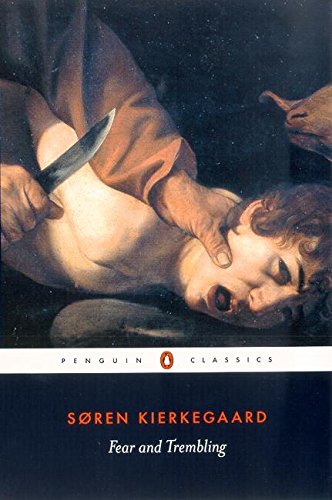Take Up and Read: Fear and Trembling
This current blog series on Reflections is intended to encourage Christians to read more vigorously by providing a beginner’s guide to some of the Christian classics in such fields as theology, philosophy, and apologetics. Hopefully, a brief introduction to these important Christian texts will motivate today’s believers—as St. Augustine was called to in his dramatic conversion to Christianity—to “take up and read” (Latin: Tolle lege) these classic books.

This week’s book, Fear and Trembling, is by Søren Kierkegaard and is arguably his best-known work among his many writings. The book is understood to reflect some of the basic themes of Christian existentialism. While Kierkegaard wrote in obscurity during his lifetime, his works would later become enormously popular, with Fear and Trembling becoming a Christian and philosophical classic.
Why Is This Author Notable?
Danish thinker Søren Kierkegaard (1813–1855) became arguably the most influential philosopher in the Western world a century after his death. As the “father of existentialism” (a philosophy that emphasizes individual existence and freedom), his ideas influenced both religious and secular philosophers. So both Christians and atheists claim the title “existentialist.” For more about Kierkegaard and his accomplishments, see my article “Christian Thinkers 101: A Crash Course on Søren Kierkegaard.”
What Is This Book About?
Fear and Trembling was initially published in 1843 under the pseudonym Johannes de silentio (meaning “John of the Silence”). A number of Kierkegaard’s books were published under fictitious names. The title is a reference to a passage from the Pauline New Testament Epistle Philippians, which says, “Work out your salvation with fear and trembling” (Philippians 2:12).
This work reflects Kierkegaard’s philosophical, theological, and poetic thoughts on the gripping biblical story of God telling Abraham to sacrifice his son, Isaac (see Genesis 22). Abraham’s trust in the Lord is the very foundation of his life and beliefs. Thus, his confidence in God’s moral character and supernatural power allows him to have faith in God in light of a command that seems contrary to reason and ethics.
This work focuses on the the idea that the religious life cannot be reduced to or understood merely in terms of ethics but is instead grounded in personal trust in God’s goodness. For Kierkegaard, life moves through three stages: the aesthetic (natural desires), the ethical (moral choices), and the religious (spiritual awareness). “Faith,” for Kierkegaard, runs deeper than both reason and ethics to a profoundly personal, trusting relationship with God.
Not all Christian scholars agree with Kierkegaard’s conclusions about faith’s relationship to reason and ethics. But Kierkegaard’s writings often include not only philosophy and theology but also poetry, literature, and psychology.
Below, Kierkegaard contrasts the person who operates within the ethical stage of life (the tragic hero) with Abraham (the knight of faith), who operates within the religious stage of life:
The difference between the tragic hero and Abraham is obvious enough. The tragic hero stays within the ethical.1
Why Is This Book Worth Reading?
Søren Kierkegaard was a profound and controversial Christian thinker and writer. And Fear and Trembling is a masterful work that reflects both profundity and controversy. A Christian may not always agree with Kierkegaard, but it would be a significant loss to fail to read his challenging writings.
Therefore, take up and read Fear and Trembling.
Reflections: Your Turn
Do you agree that faith cannot merely be reduced to reason and ethics? Why, or why not? Visit Reflections on WordPress to comment with your response.
Resources
- To learn more about Kierkegaard, see C. Stephen Evans, Kierkegaard: An Introduction (Cambridge: Cambridge University Press, 2009).
- To understand Kierkegaard’s philosophy as a form of Christian psychology, see C. Stephen Evans, Søren Kierkegaard’s Christian Psychology: Insight for Counseling and Pastoral Care (Vancouver, BC: Regent College Publishing, 1995).
Endnotes
- Søren Kierkegaard, Fear and Trembling (New York: Penguin, 1985), 87.






